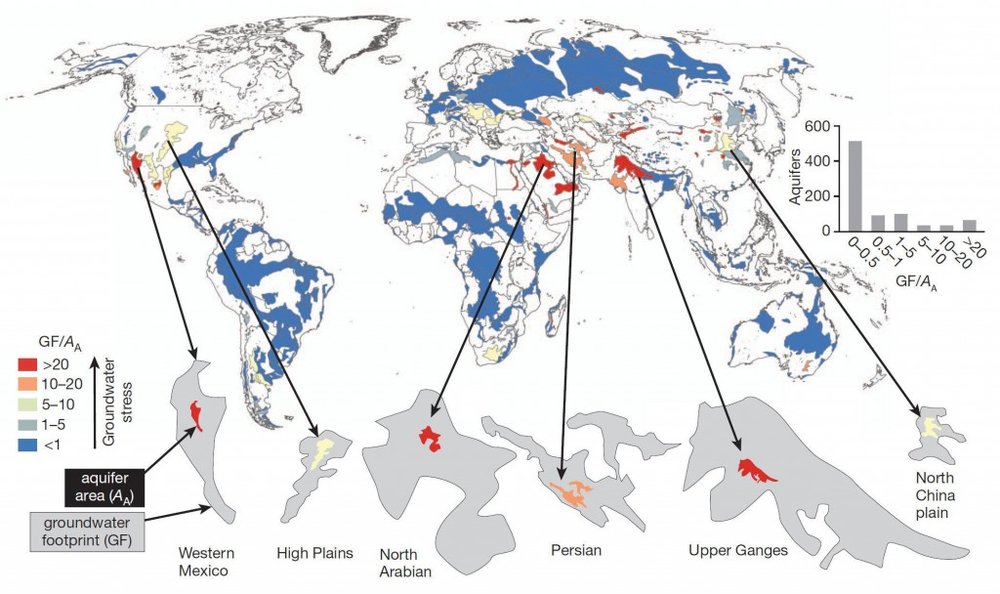Using fossil water is a soft option, reappraise it

First Vice-President Es’haq Jahangiri has recently ordered studying the possibility of tapping into the country’s underground supplies of fossil water.
The term fossil water, or paleowater, refers to underground water reservoirs that have been geologically sealed. The water contained in them cannot be replenished and may have been locked in for thousands of years. The age of the water is what gives it the name ‘fossil water’.
While it is quite clear that Iran, situated in an arid and semi-arid area, is suffering from water shortage, officials are trying to come up with various solutions to tackle the issue.
President Hassan Rouhani has emphasized the need for water reforms but the policies and measures adopted and implemented so far do not seem to be effective.
Iran’s looming water scarcity
Long-term mismanagement and improper planning coupled with climate change, which has provoked low precipitation and accordingly drought spells in many regions, have exacerbated the situation and now the prospects of a gloomy future is raising. Widespread and unsustainable dam development as well as untenable farming practices have resulted in degradation, reduced land productivity, shrinking lakes and whole communities left without access to water.
Chief of the Department of Environment Isa Kalantari has said since the establishment of the Ministry of Energy in 1961 Iran’s renewable water resources - total amount of water resources both internal and external resources including surface water and groundwater, which is generated through the hydrological cycle - amounted to 132 billion cubic meters and now the number is calculated at 88 billion cubic meters.
“At the time with 132 billion cubic meters of water we withdrew some 50 billion cubic meters annually, however, currently with only 88 billion cubic meters of water the water removed from available sources for human use is about 97 billion cubic meters per annum. Currently we withdraw more than 110 percent of our renewable resources while the number should be restricted to 40 percent,” he noted.
This is also an indicator of pressure on the renewable water resources, with 88 billion cubic meters of water we are allowed to withdraw some 35 billion cubic meters to meet international standards.
Stop looking for easy options
And after depleting groundwater resources as well as the surface water the government is looking for another source to drain and exhaust: fossil water.
While drilling underground water is a hard job to accomplish regarding the depth of the water, however, it seems to be an easy option for the government to empty yet another sources of water instead of revising the current longstanding and unsustainable practices.
Last November Deputy Energy Minister Sattar Mahmoudi said that Iran was working on a plan to look for underground fresh water resources in cooperation with Russia. The project envisages looking for underground water resources as deep as 2,000 meters with Russia’s help for this.
Mahmoudi added that the government has allocated a budget of 200 billion rials ($5.7 million) to conduct the required studies. He noted that eastern parts of Iran are specifically believed to contain underground formations that hold significant volumes of water – what is technically referred to as the ‘fossil water’ remaining from ancient seas.
The problem is that this water is a finite resource and often comes with dangers in addition to the water running out after the population has come to rely upon it. For over 50 years Libya has relied on fossil water supplies that are now dwindling. Perhaps no other water policy issue has greater philosophic disagreement than the exploitation of these non-renewable groundwater. Use of non-renewable groundwater is thus inherently unsustainable under strict definitions of the term.
In arid areas fossil water is becoming as valuable as fossil fuels and like oil, no one knows how much there is—but experts do know that when it’s gone, it’s gone.
In an article titled “underground fossil water running out” published by National Geographic it is stated that while fossil water can fill critical needs, experts warn that it’s ultimately just a temporary measure until conservation measures and technologies become status quo.
Mike Edmunds, a hydrogeologist at Oxford University in the Great Britain has told National Geographic that globally, wells are often drilled to about 320 feet (100 meters). “Quite possibly only the top couple of meters of that are recent water.” People think about quantity when they are pumping, they don’t ask about renewability as much—and that’s the big issue, Edmunds regretted.
According to AZoCleantech, an online publication for the Clean Technology community, the prospect of fossil water reserves running out is not limited to the Middle East or northern Africa. Parts of the former USSR, India, China and Mexico all depend on non-renewable water taken from ancient aquifers. In the United States a number of the Great Plains states take a considerable amount of their water from a fossil water aquifer.
Moreover, according to Spiegel the Middle East and North Africa which suffer from water shortages pump millions of liters a day from ancient aquifers. But the water contains high levels of naturally-occurring radioactive contamination. Experts fear this will increase the cancer risk for millions of people.
While in Iran depleting groundwater resources has already given rise to many serious issues such as land subsidence and wetlands dryness it seems greatly imprudent to try to use another resources which are non-renewable and proved to be ineffective or even hazardous in a long-run.
It is certainly wiser to forget about easy options which are already tried by other nations and didn’t simply resolve the problem of water scarcity and make collaborative attempts to revise the current water usage policies by using the modern technologies and improving the water sector.
MQ/MG
